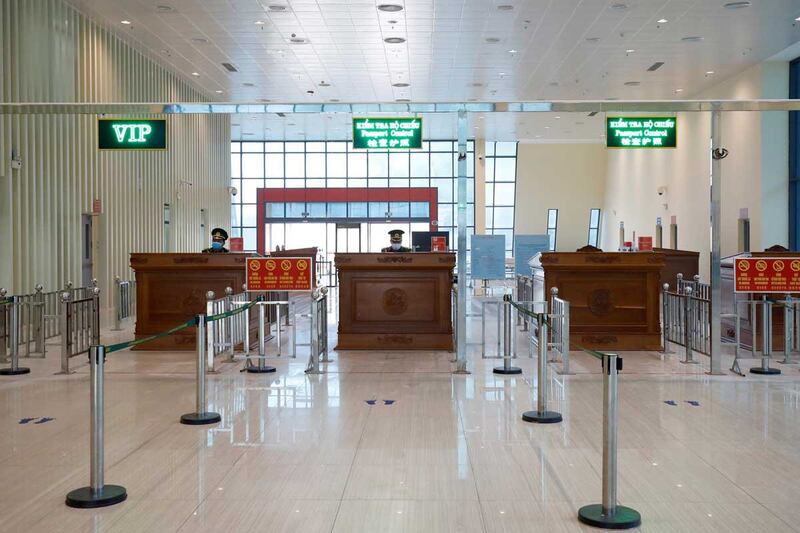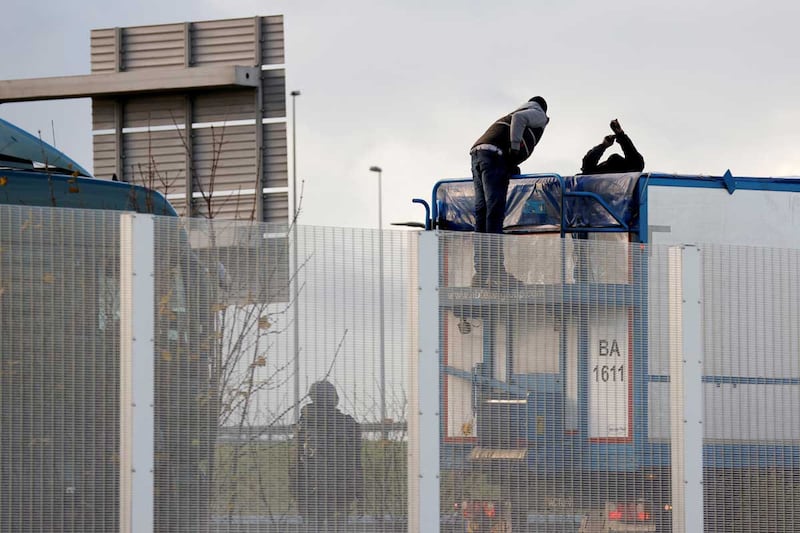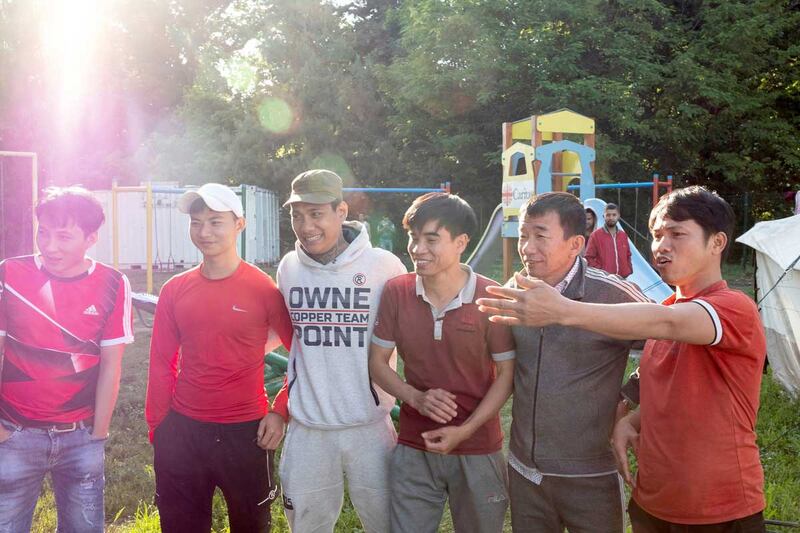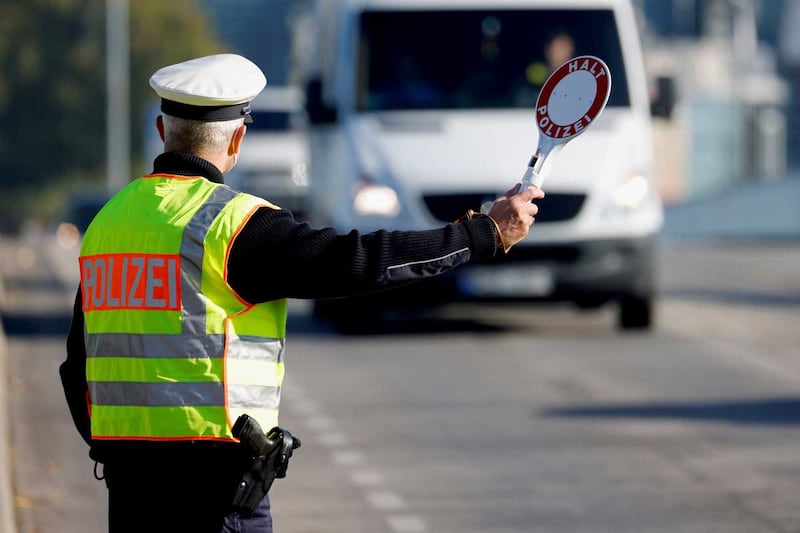For Vietnam’s “container people,” the journey from their home country to the West must seem relatively routine when they first set out.
They leave home typically with the support of their families, who willingly send their most promising sons or daughters off in hopes they can earn enough to change the family’s economic standing in Vietnam.
They meet with smugglers who, though often associated with organized crime syndicates, may at first seem like travel agents, offering tips and forged documents and promising help along the way.
Underwriting the expensive journey is a government that, like the families themselves, wants the extra money flowing back to the Vietnamese economy.
But in truth, the trek, which has been made by tens of thousands of Vietnamese in recent years, remains one of great risk, as seen most vividly in 2019 when 39 migrants were found freezing and gasping for air in the back of a refrigerated lorry in Essex, U.K. None of the victims survived.
This article is part two of a four-part RFA series examining the aftermath of that tragedy two years ago. Vietnamese smuggling networks bring about 18,000 people from Vietnam to Europe each year in what amounts to a $300 million business, according to a 2017 report by the United Nations’ Economic and Social Council.
One of the surprising aspects of RFA’s investigation is how out in the open the illegal migration has become, even as the dangers remain extreme.
Women who make the journey are often sexually assaulted along the route. Migrants are stranded and detained by host countries for weeks at a time. Sources RFA has spoken with talk of having to walk for weeks on end as part of their journey. As illegals, the migrants are easily exploited in the countries they travel through.
“Law enforcement agencies have reported increased prevalence of sexual exploitation online and use of technology to facilitate criminal conduct. There have also been delays in the criminal justice system, to the detriment of victims’ rights,” the Group of Experts on Action Against Trafficking in Human Beings with the Council of Europe said in a report on trafficking in Europe in 2020.
And yet sources said neither the Essex tragedy nor the pandemic have slowed the flow of Vietnam’s container people, as the promise of greater money and freedom, particularly in the U.K., is too great to pass up, with powerful interests promoting the perilous journey.
The VIP route
One smuggler RFA spoke to on the condition of anonymity said he offers a short menu for “clients” to choose from. The VIP option costs about one billion VND, or about $45,000 USD. For that price, the migrants are taught before they leave Vietnam how to respond to airport officials and border crossing agents in a way that minimizes the risks of raising suspicion.

“Our service will provide everything for the migrant from A-Z,” the smuggler says. “We take them to the airport. We meet them on arrival and provide food and shelter until the contract ends.
“Of course, there may be some exceptional circumstances. The traveler could be arrested during the journey. In that case, the contract would be considered unsuccessful, and the traveler bears the fallout.”
The VIP service reserves slots for migrants in empty spots on containers shipped from Europe over the English Channel to the U.K., which is the hoped-for destination for most of the travelers due to its perceived economic opportunities and political freedoms. The benefit in these cases is that the drivers of the trucks the containers are attached to know who they are ferrying people.
A more dangerous if cheaper method is called the “foot route.” Its two-thirds the price of the VIP service, but carries greater risks as the migrants are placed furtively in containers without the driver’s knowledge, potentially increasing the chances they could be trapped for long periods of time.
Easy access into Eastern Europe
The collapse of the Soviet Union marked the beginning of an influx of Vietnamese into former Soviet Bloc countries. Migrants today follow routes already established by Vietnamese who came to East Germany, Poland and Czechoslovakia as guest workers during the Communist era.

Migrants still have a relatively easy time reaching Eastern European countries as their governments by and large have relaxed policies in order to attract laborers from Vietnam. That leg of the journey is usually legal.
But the true destination is often the wealthier countries further west. Mac Viet Hong, a Vietnamese journalist living in Poland, said most migrants view Eastern Europe as way stations.
“Poland is a hot spot because it’s the gateway for people to transit from Eastern Europe like Ukraine and Russia,” she said. “Some of the Vietnamese migrants stay if they have friends or family here, but most of them continue on to the West.”
Mac Viet Hong said that she knew that some of the victims in the Essex case had traveled first through Poland.
Families who send off their children for better economic and social opportunities almost by definition don’t have many resources on their own. The average monthly salary in Vietnam is just several hundred dollars a month.
The only way they can afford to pay smugglers is by going deeply in debt. This is where the government itself offers a helping hand, through high-interest loans from so-called “poverty reduction, hunger eradication” programs, says Tran Hoang Viet, a 25-year-veteran working alongside German police investigators against Vietnamese nationals and the crime syndicates they operate. Tran Hoang Viet is a pseudonym.
The government’s involvement doesn’t typically end there, according to Tran Hoang Viet, who lives in Germany.
“The brokers usually work very closely with the Vietnamese government to produce the required documents, from A to Z. They take care of the passports too. They also pay local authorities to get transit papers, visas to get to Poland, or Moscow.
“So, they have to have agencies or factories over there issuing ‘invitations.’ That’s how these migrants get there.”

The Department of Overseas Labor of Vietnam’s Ministry of Labor reported in September 2021 that 41,000 Vietnamese laborers were “exported” abroad so far this year, despite the Covid-19 pandemic. The numbers show steady increases of migrants traveling to Eastern European countries like Hungary, Bulgaria and Romania.
The first leg of the journey to these countries might be completely legal, Hungarian journalist Nguyen Hoang Linh said. Migrants register with a local company to come and work. Once in Hungary, the workers can travel legally to other parts of the European Union, but they cannot work.
“And, of course, for the part of the trip from Germany or France to the U.K., which has left the EU, they have to find smugglers one way or another,” Nguyen Hoang Linh said.
German police say smuggling rings bringing Vietnamese across Europe aren’t exclusively Vietnamese. The networks typically employ citizens of each respective country they pass through, versed in the local landscape.
“Each part of the route, they’ll have people from that country working for the smuggling organization. They know each other, they know who is mastermind. That means we’re not just dealing with Vietnamese criminal groups when someone is smuggled from Vietnam to Germany, but perpetrators of a mix of different nationalities,” said Chief Detective Nicole Baumann from Germany’s Federal Criminal Police Office.

Tran Hoang Viet says authorities in Eastern Europe often turn a blind eye to the trafficking, knowing that “these migrant groups are just passing through.
“Their destination is Western Europe, not Russia, or Ukraine, Slovakia, the Czech Republic or Poland.”
Bouts in immigration detention
But if the traffickers often operate with impunity, the migrants still face legal trouble if they get caught. Nguyen Thi Hoa, a woman who made the journey as an illegal migrant from Vinh Phuc province in Vietnam to Poland in 2005, said she was arrested and put into detention three times. Like other sources who are quoted in this series, Nguyen Thi Hoa is a pseudonym.
“I was detained the Czech Republic for one day and one night, then released. In Slovakia, I was detained for about a month, then released,” she said. “I don’t know if the government in Slovakia decided to free me or if the smuggling network brought me out. I think the network did, because why would the Slovakian government release me on their own.”

Tuyen Nguyen who has lived in Kiev, Ukraine, since the 1990s and has helped migrants left stranded in the country by traffickers says it’s in the smugglers’ interest to bail out the detained.
“The networks smuggling Vietnamese people pay off the local law enforcement to release the migrants. Once freed, the smugglers pick them up, and they continue on their way. They don’t get paid by the family back home until the migrant has successfully completed their journey so by all means, they have to bring them to Europe, then to the U.K. The local police arrest someone every few days, every few weeks. It continues like that,” he said.
This catch and release scheme helped local authorities avoid costly deportation proceedings and resources, he said.
Nguyen Thi Hoa was arrested three times in three different countries, including in France before she crossed into the U.K., is among those considered to have achieved the dream. She reached England safe and sound in 2010, and she has since become a legal resident there.
The death of the Essex 39 serves as a tragic reminder that not everyone is so lucky.
Vietnamese community leaders across Europe say the incident slowed the flow of migrants to the West, but only temporarily.
